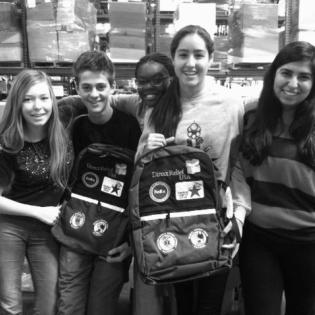Outline the Solution Criteria
In this lesson, students dream big and envision what it would look like to have the problem solved. They discuss steps to take and what they need to learn in order to accomplish the task. They take personal responsibility for carrying out the expectations they set for the final service-learning project proposal.
The learner will:
- envision the outcome if a need they identified is solved.
- describe the goals of the project and the steps to take.
- describe the tasks and the students' roles.
- chart paper and markers or whiteboard for T-chart
- copies of the handout below: Rubric
- rubric: a scoring tool that lists the criteria for a piece of work
- proposal: (n) a written application, often with supporting documents, submitted to a foundation or corporate-giving program in requesting a grant
Instructions
Anticipatory Set:
The Blue Sky Envisioning Activity facilitates discussions about what students are passionate about and the project goals. This optional activity is ideal for big picture planning.
Ask, "What makes an effective service-learning project?" They may think quietly and turn to a partner to discuss.
Make a T-chart on the board with "Effective Service-Learning Project/Ineffective Service-Learning Project" as categories. Based on their previous experience, students may have suggestions such as the following positive elements: addresses real needs, involves collaboration, everyone is involved, and feels good to make a difference. Ineffective traits might be adult-led, not based in real needs, or doesn't involve the people most impacted.
Provide important points if they have little experience with service-learning.
Discuss their responses and make notes on what they think is most important to them. Encourage them to take responsibility to make sure those traits are followed.
To make expectations clear, give a preview of the presentation rubric (handout below) guiding their expectations, budget, and outcomes. This project includes a large amount of student choice, so a complete understanding of the final project is important.
As a heads-up, tell them that their proposals will be shown to community members during an expo later in the unit where community members ask the students clarifying questions.
Handouts
Philanthropy Framework
-
Strand PHIL.IV Volunteering and Service
-
Standard VS 03. Providing Service
-
Benchmark MS.2 Describe the goals of the project and their impact.
-
Benchmark MS.3 Describe the task and the student role.
-
-
